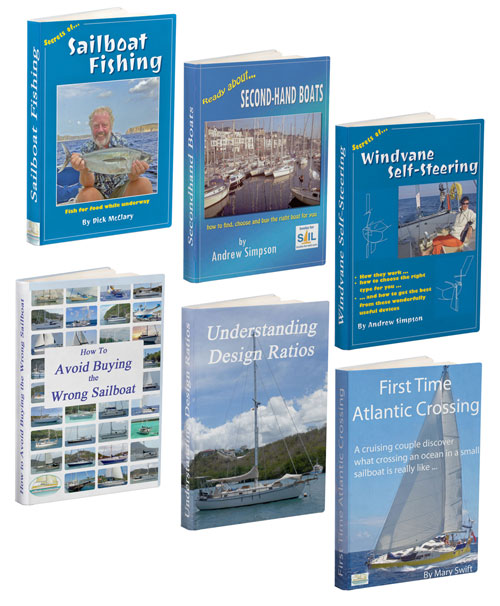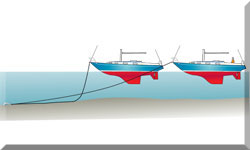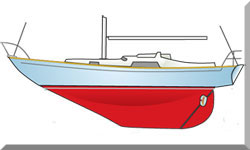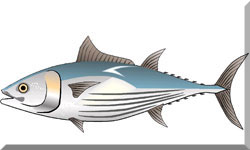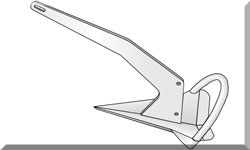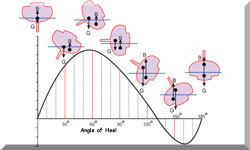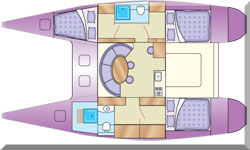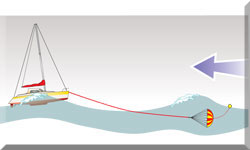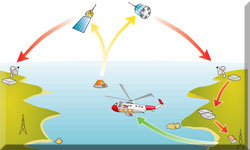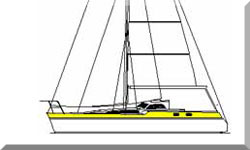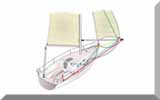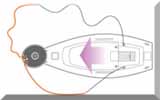- Home
- Anchoring Skills
- Sailboat Anchor
- Anchors and Anchoring
Anchors and Anchoring: Your Questions Answered
If you've read the previous pages about anchors and anchoring and still got a question, odds are you'll find the answer here.
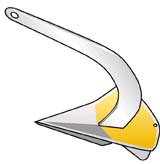 Spade
Spade CQR
CQR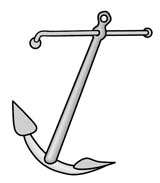 Fisherman or Yachtsman
Fisherman or Yachtsman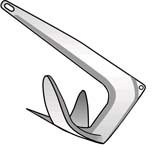 Bruce
Bruce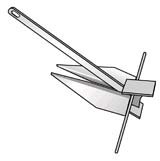 Danforth
Danforth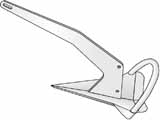 ROCNA
ROCNA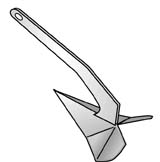 Delta
Delta Bugel
BugelWhat type of anchor is best for my sailboat?
What type of anchor is best for my sailboat?
The choice of anchor depends on factors like the size of your boat, typical sailing locations, and common conditions.
- Plough anchors, such as the CQR, are versatile and effective on sand, mud, and gravel, though they can be bulky and difficult to store on smaller boats.
- Spade anchors are reliable due to their excellent digging-in ability, making them a top choice for long-distance cruisers.
- Danforth anchors are lightweight and easy to stow, providing strong holding power in sand or mud, but they may not reset well if the wind or current changes direction.
- Claw anchors are easy to deploy and ideal for soft seabeds, although they may not perform as well on harder surfaces.
Modern anchors, like Mantus or Ultra designs, combine quick setting and high holding power, making them excellent for stormy conditions or challenging environments.
How much chain or rope should I use when anchoring?
How much chain or rope should I use when anchoring?
The length of chain or rope is crucial for effective anchoring.
Chain is durable and resistant to abrasion, while also providing the added benefit of improving the anchor's angle of pull.
Rope, being lightweight and easier to handle, is often preferred for smaller boats.
A common solution is to use a combination of chain and rope to benefit from both.
The scope, or the ratio of anchor line to water depth, is typically 5:1 to 7:1 for rope and 3:1 to 5:1 for chain. For instance, in water 5 meters deep with an extra meter from the bow to the waterline, a 7:1 scope would require approximately 42 meters of rope.
To make it easier to manage, colour-coded markers on the anchor line help monitor the length deployed.
How do I choose a good anchorage?
How do I choose a good anchorage?
Selecting a suitable anchorage involves evaluating depth, protection, and the seabed.
- Depth should take account of tidal range and leave room for the boat to swing without the risk of grounding or colliding with other anchored boats.
- Look for areas with natural barriers, such as cliffs or reefs, to protect against wind and waves.
- Low-fetch locations, where the wind doesn’t travel far over water, help minimize wave buildup for a stable environment.
- A sandy or muddy seabed offers better holding power than rocky or coral bottoms, which are more challenging to anchor in.
Nautical charts are useful for identifying seabed composition and other anchorage features.
Arriving early at a popular anchorage ensures you have enough space and reduces the likelihood of crowding near other boats.
What are the best techniques for setting and retrieving an anchor?
What are the best techniques for setting and retrieving an anchor?
Anchoring effectively requires careful techniques. When preparing to drop anchor, slowly approach your chosen location and position the bow into the wind or current. Lower the anchor gently to the seabed, and reverse carefully while paying out the scope. This lets the anchor dig in securely. Test its hold by engaging reverse propulsion and observing movement using landmarks or a GPS anchor alarm. To retrieve an anchor, motor slowly toward it while hauling in the line. Once directly above the anchor, pull it vertically to free it. Tools like windlasses or winches make retrieval easier for heavier anchors or chain. Before storing, inspect the anchor for tangles or debris and clean it as necessary.
How do I handle challenging seabed conditions?
How do I handle challenging seabed conditions?
Anchoring in difficult seabeds requires adapting techniques and using suitable equipment. On rocky seabeds, anchors with sharp flukes or teeth perform better, though you should avoid areas where large rocks may snag the anchor line. For weedy or grassy seabeds, clear away debris from the anchor flukes before setting, and opt for heavier anchors like plough designs that can cut through vegetation. In soft mud, wide-fluke anchors increase holding power, but you must avoid pulling too hard when setting or retrieving, as this can dislodge the anchor prematurely.
What should I do if my anchor gets stuck?
What should I do if my anchor gets stuck?
Freeing a stuck anchor can be challenging, but there are several strategies to try. Manoeuvring the boat to change the angle of pull often releases the anchor. Using a trip line attached to the anchor before deployment makes retrieval easier, especially in rocky areas. Marking the anchor’s location with a buoy can also assist in freeing it. If these methods fail, a diver may be required to retrieve the anchor manually, though cutting the anchor line is considered a last resort.
How do wind and currents affect anchoring?
How do wind and currents affect anchoring?
Wind and currents play a significant role in how well your boat stays anchored. Position the bow facing the wind or current to ensure stability. During extreme weather conditions, deploying two anchors in a V-shape can provide additional holding power and reduce the risk of dragging. In storms, slightly reducing the scope ratio limits the boat's swing radius and decreases the chance of collision with nearby vessels. Regularly monitoring changing conditions and ensuring sufficient swinging room are essential for maintaining safety and security at the anchorage.
Recent Articles
-
Which Type of Boat Fridge Is The Most Efficient?
Apr 24, 25 05:06 AM
The top opening boat fridge is reputed to be more efficient than the front opening type, but that may not be the case - and here, amongst other boat refrigeration considerations, is why -
Multihull Autopilot Selection is Not Straightforward
Apr 19, 25 01:25 PM
Whether its for a catamaran or a trimaran, tiller or wheel steered, a multi hull autopilot must be endowed with specific performance characteristics... -
Wheel-Steering Autopilots: Your Questions Answered...
Apr 18, 25 03:45 PM
Whatever your question, you should find the answer here
